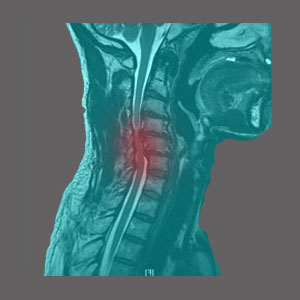
Spinal stenosis MRI is a modern and advanced diagnostic imaging tool which recreates the inside of the spinal column in vivid and fascinating detail. MRI is currently the very best diagnostic imaging technology which is available worldwide and represents the best hope for most back pain patients to enjoy an accurate diagnosis of their causative conditions. Understanding exactly what MRI can and can not do is crucial for all spinal stenosis patients.
This article will help explore the benefits and limits of MRI technology in relation to spinal stenosis diagnosis.
Spinal Stenosis MRI Advantages
MRI, or magnetic resonance imaging, creates a multi-dimensional map of the spine from various perspectives. The technology can visualize both bones and soft tissues, including intervertebral discs, large nerve structures, ligaments and tendons.
MRI can look into the body and specific joints without surgery, which is a fantastic breakthrough, saving countless millions of people each year from exploratory procedures. This is a major advancement in medicine. MRI can detail all the possible causes of spinal stenosis and all the possible contributors, as well. This way, doctors and patients can view the images and use them as a guide in symptomatic correlation. This is all part of a proper spinal stenosis diagnostic evaluation.
MRI Testing Disadvantages for Stenosis
It is difficult to find fault with the actual MRI technology itself. However, it is far easier to find fault with the human contribution to the diagnostic process. Ok, so the machine is not perfect. Many patients hate the long time the testing takes. Others complain that they can not be imaged in the best position, either for comfort or for their symptomatic expression. The latter is a very valid concern in same cases where position-dependent back pain is the major complaint.
Far worse is the fact that the machine does not diagnose anything; doctors do. They view the images and then put their own opinion out there as to the potential sources of pain. Opinion is the key word, since it implies a subjectivity which can reflect many possible underlying agendas.
We see MRI results by the tens of thousands. In most cases, radiologists read them factually and accurately. In some cases, evidence is overlooked. However, in many cases, evidence is played up with particularly frightening terminology, purposefully enacted to scare the patient. It is not a coincidence that these types of reports virtually always come from in-house radiologists in the largest back injury mills, often directly employed by large plaintiff-friendly legal practices. The entire show is a sham at these facilities, much to the detriment of the poor patient, who is a puppet along for the ride; but we digress.
Spinal Stenosis MRI Confirmation
So, the bottom line on MRI is a very positive one. If you are suffering from any type of chronic spinal stenosis back pain, an MRI can be very useful at locating the potential structural cause or contributors, as well as dismissing a potential structural causation entirely.
I always recommend that spinal stenosis sufferers get MRIs, even if their diagnosis has already been achieved though less advanced technologies, such as X-ray film.
A final note worth mentioning for all of you who do not know: Take away the report from the MRI films and show the images to 5 different radiologists. You will likely get 5 different readings with emphasis placed on different findings. This just proves the incredible subjectivity of the interpretation of the technology. I see this often and have actually gotten some very different interpretations of my own images from some doctors.
Spinal Stenosis > Spinal Stenosis Diagnosis > Spinal Stenosis MRI





